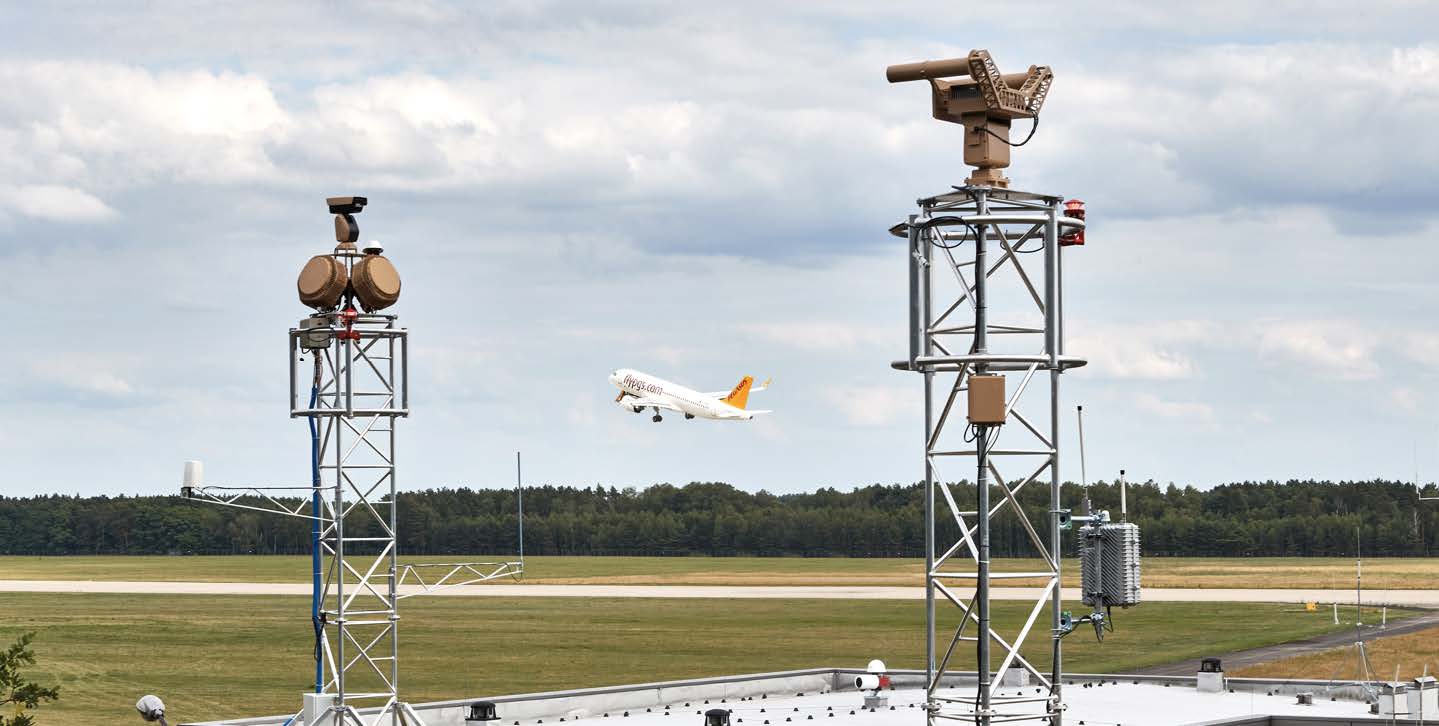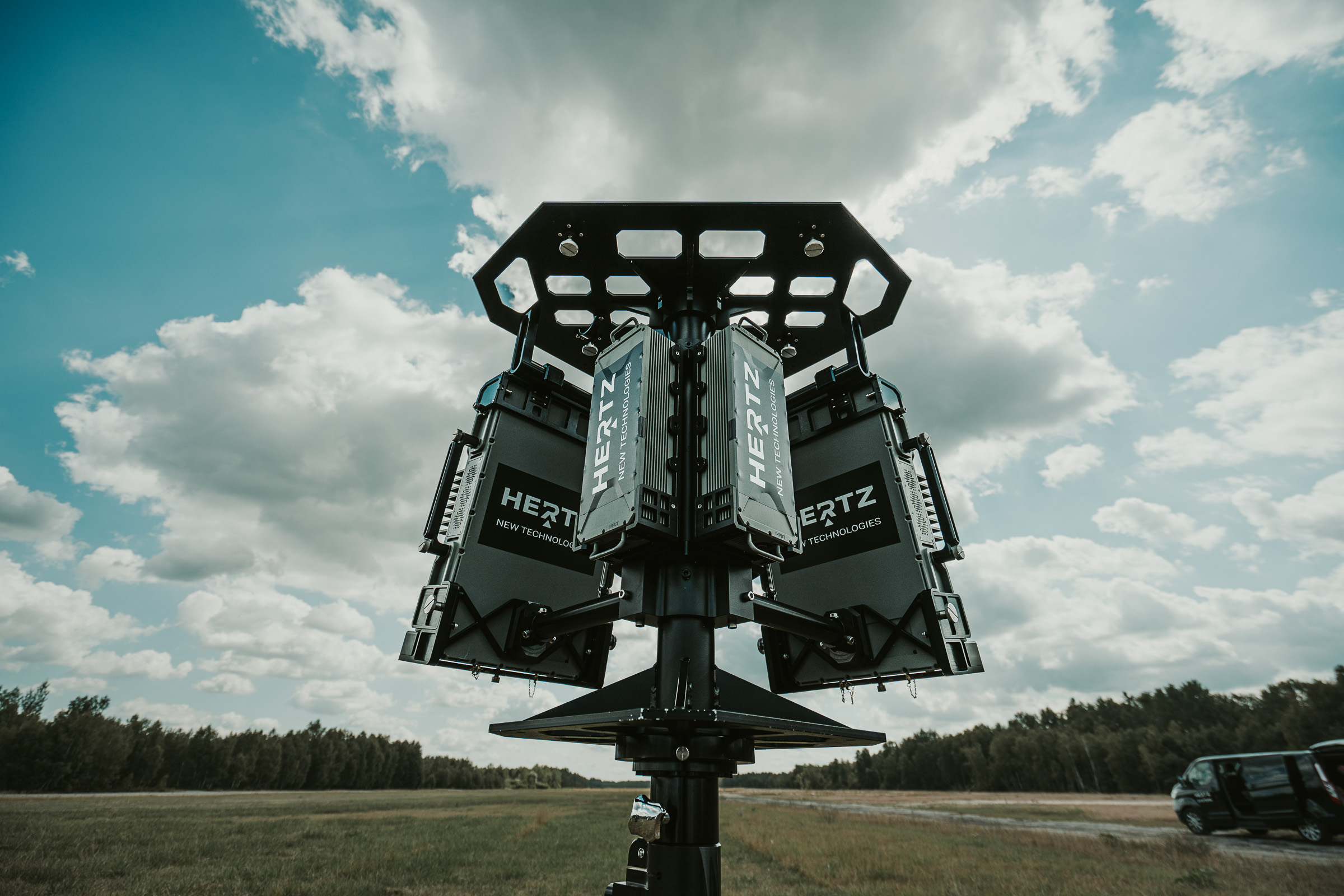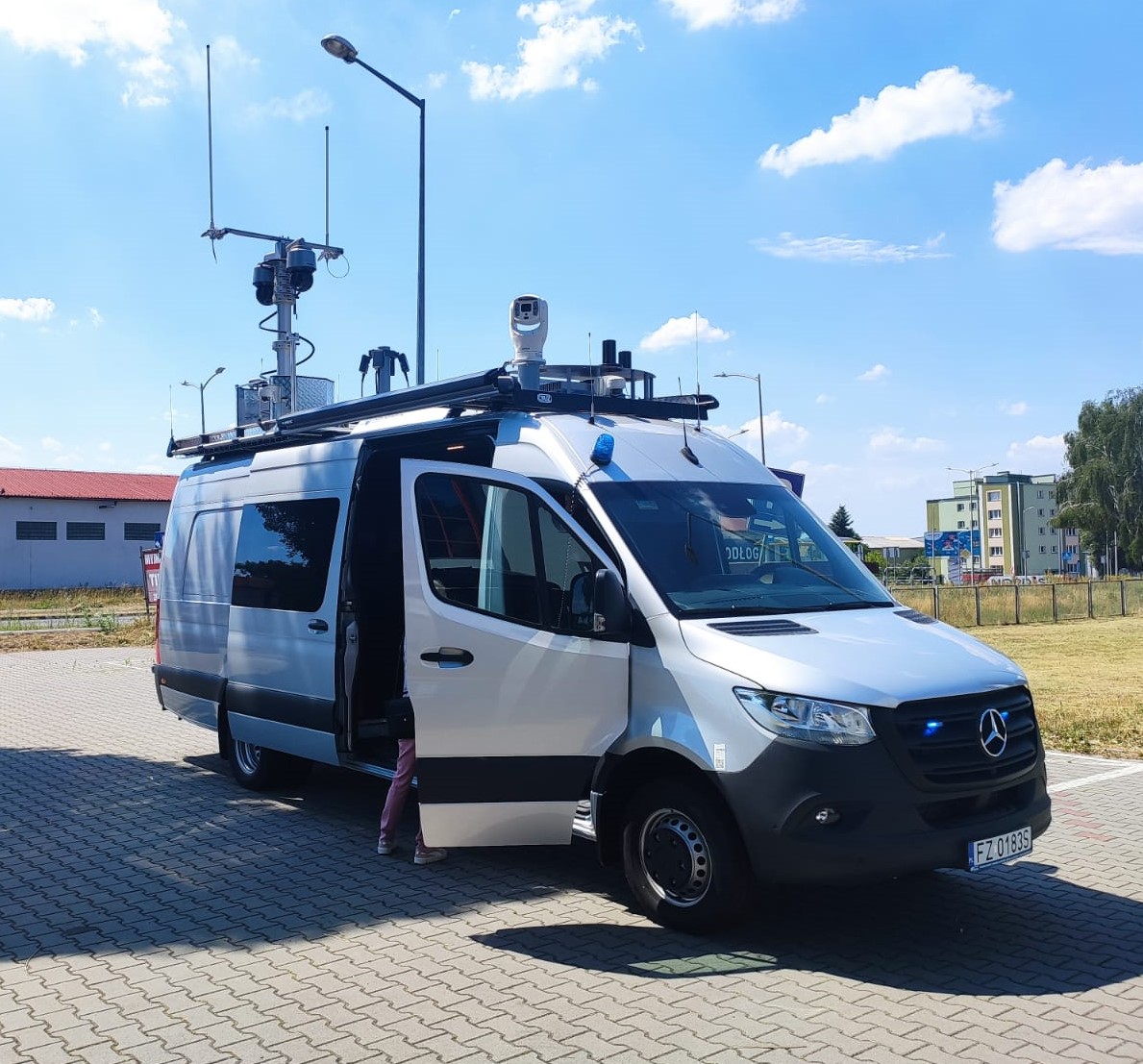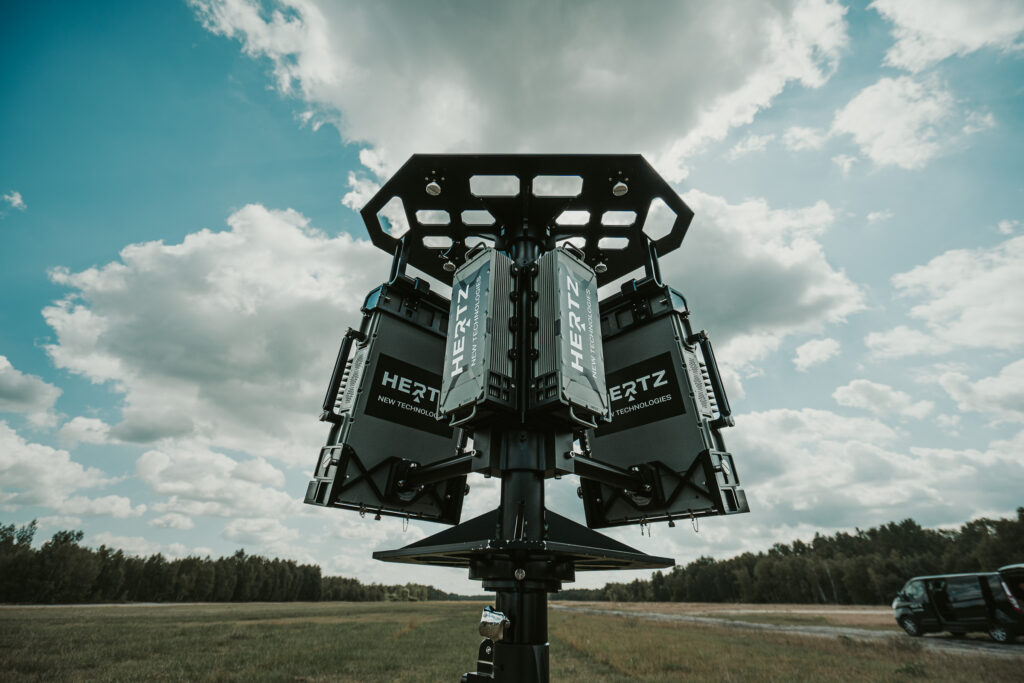
At Hertz New Technologies, we are constantly working on solutions to ensure safety in the face of new challenges. We are proud to present a short report on an exercise involving our latest product, the Hawk anti-drone system, which recently debuted during a demonstration on the training ground of the Military Institute of Armament Technology.
Hawk is a comprehensive solution, combining our best technologies for the detection, identification and neutralisation of UAVs. The system is designed in a modular concept, allowing it to be quickly adapted to a wide variety of threat scenarios.
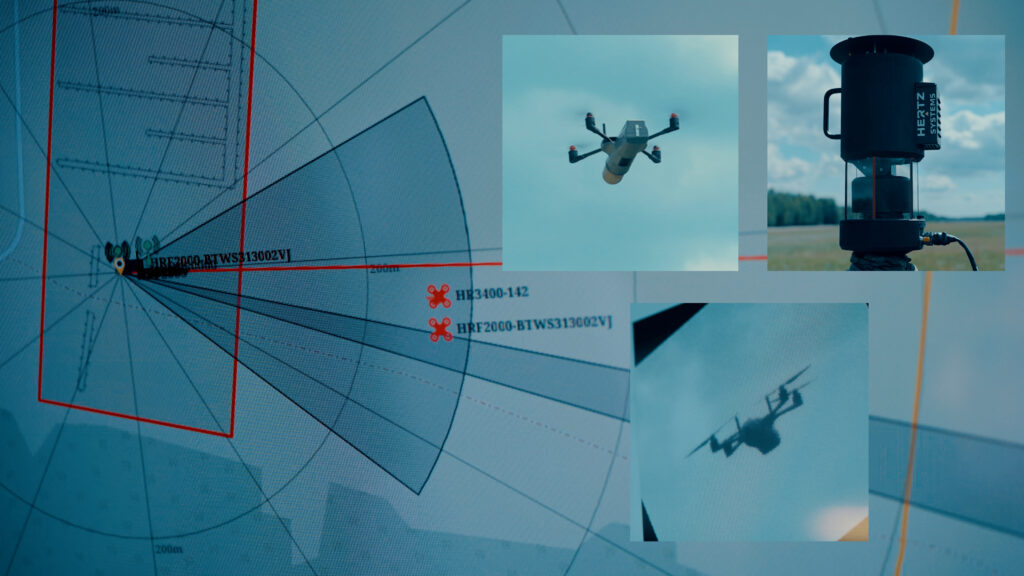
During the presentation, our team, together with experts from WITU, conducted a series of tests under realistic conditions. We simulated various situations, from a single drone attack to a massive swarm attack. The Hawk system proved its effectiveness in each scenario, detecting threats from a distance and neutralising them using a variety of methods.
We know that effective drone defence requires preparation for a variety of attack scenarios. During a recent demonstration of our Hawk system at the training ground in Zielonka, we conducted a series of tests that illustrate its versatility and effectiveness.
Here are some of the key scenarios our system faced:
1. Drone swarm attack
Challenge: Simulated attack carried out by a group of drones of different types (Matrice 300, Inspire 2, Mavic 3), moving at different altitudes at around 50 km/h.
The system detected the threat from about a kilometre away, giving operators valuable time to prepare a response. The Hawk successfully tracked and neutralised individual craft, demonstrating its ability to deal with multiple targets simultaneously.
2. Diversion tactics
Challenge: a scenario in which the Autel Evo Max 4T drone acted as the main attacker, while the Mavic 3 was tasked with distracting the defence system.
Our system was not fooled in this case either. It detected both drones, correctly identified the main threat and used a directional jammer to effectively jam the control signals of both machines.

3. Circulating munitions
Challenge: simulated attack using DragonFly circulating munitions (developed by WITU), travelling at 30-120m.
The system demonstrated its ability to detect even such advanced threats. DragonFly was detected by radar and then identified using infrared cameras, allowing appropriate defensive action to be taken.
4. Single reconnaissance drone
Challenge: attack of a single Inspire 2 drone, flying at 80 m altitude.
The system not only detected and identified the drone, but also located the position of its operator. Using advanced GPS spoofing technology, Hawk ‘convinced’ the drone to return in the direction from which it had flown, effectively neutralising the threat without physically destroying the machine.
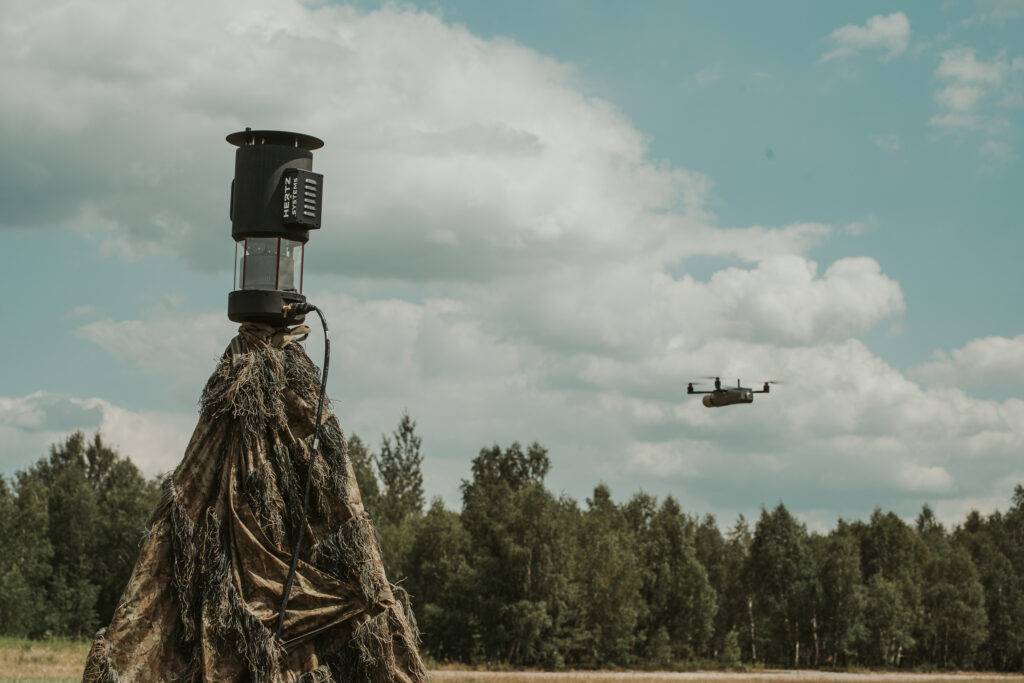
These scenarios show that Hawk is ready for a variety of challenges – from simple single drone attacks to complex operations using advanced tactics and technology. Our system combines precise detection, rapid identification and flexible neutralisation methods, making it an effective tool in the fight against the growing threat from unmanned aerial vehicles.


